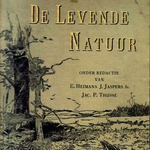Lage landen, verre horizonten. De verbinding van natuur, landschap en 'Nederlandse' identiteit in internationaal perspectief
DOI:
https://doi.org/10.18352/bmgn-lchr.6522Keywords:
Nature, identityAbstract
Karel Davids, Low countries, faraway horizons. The relation between nature, landscape and ‘Dutch’ identity in a comparative perspective
How did nature, landscape and identity in the Netherlands become intertwined during the course of the nineteenth and twentieth centuries? And more particularly, how was this development linked up with changes in the relationship between the Netherlands and other parts of the globe? These are the key questions addressed in this essay. The article argues that the growing interconnection between nature, landscape and identity can only partly be explained by home-grown traditions, such as the increased cooperation between science and capital or the presence of a highly developed art of landscape painting.
In many respects, developments in the Netherlands showed in fact striking parallels and connections with developments in other areas of the world. Numerous elements in the newly-emerged view of nature and landscape were adopted from abroad and Dutchmen ardently projected their own national ambitions and pretensions in confrontations with wild nature and foreign rivals outside their territory along the North Sea. Thus, the `Dutch’ identity was also constructed in the jungle of the East-Indies and the thin air of the Alps.
This article is part of the special issue 'Landschap, natuur en nationale identiteit'.
Downloads

Downloads
Published
Issue
Section
License
Authors who publish with this journal agree to the following terms:
a) Authors retain copyright and grant the journal right of first publication with the work simultaneously licensed under a Creative Commons Attribution 4.0 International (CC BY 4.0) that allows others to share the work with an acknowledgement of the work's authorship and initial publication in this journal.
b) Authors are able to enter into separate, additional contractual arrangements for the non-exclusive distribution of the journal's published version of the work (e.g., post it to an institutional repository or publish it in a book), with an acknowledgement of its initial publication in this journal.
c) Authors are permitted to post their work online (e.g., in institutional repositories or on their website) prior to and during the submission process.
Authors are explicitly encouraged to deposit their published article in their institutional repository.











